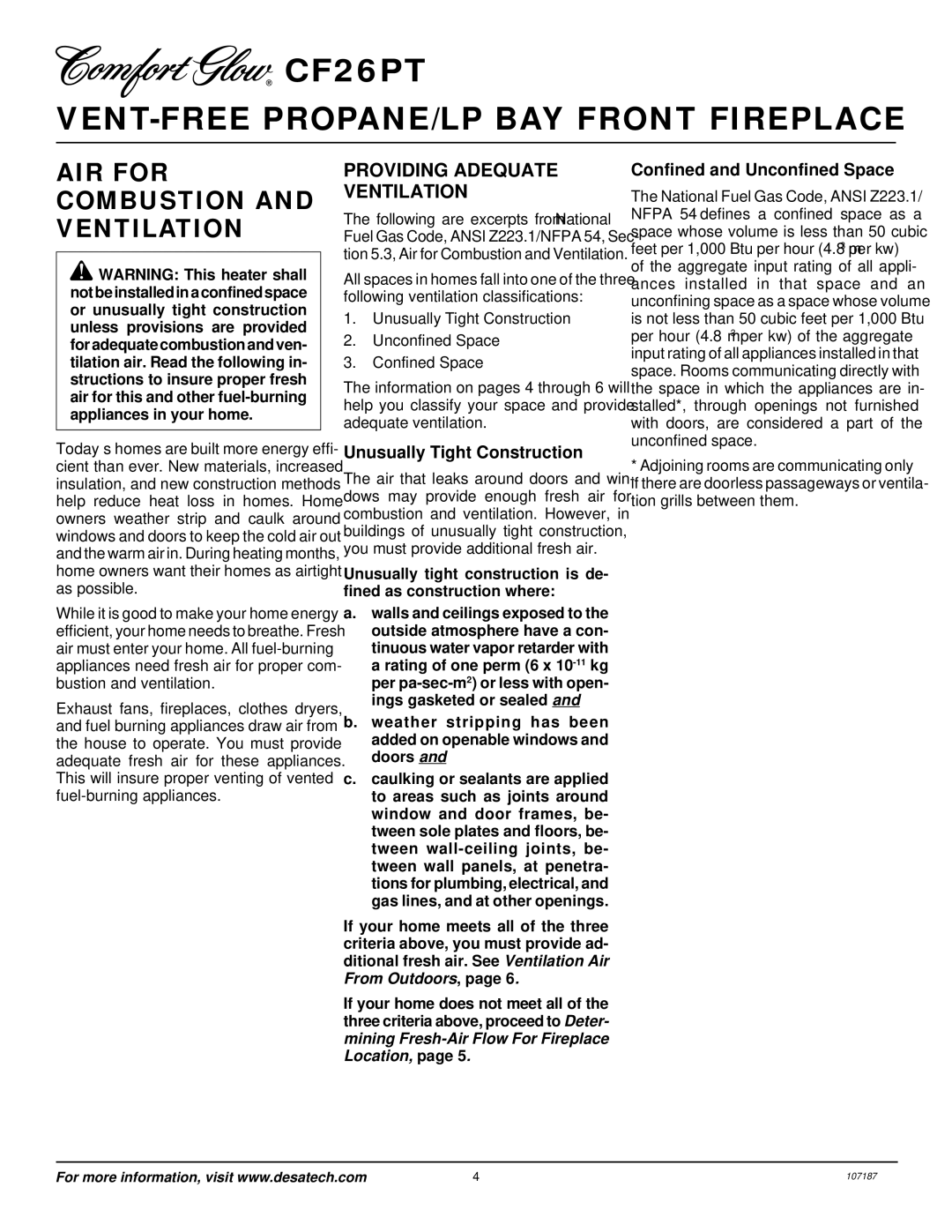CF26PT specifications
Desa CF26PT is a modern and efficient heating solution designed for residential and commercial spaces, providing comfort and convenience in various environments. This appliance stands out with its remarkable features that cater to diverse user needs.One of the main features of the Desa CF26PT is its powerful heating capacity. With an output of up to 26,000 BTUs, it is capable of warming large areas quickly and effectively. This makes it an ideal choice for homes with open floor plans or larger spaces that require consistent warmth during colder months.
The technology integrated into the Desa CF26PT is another defining characteristic. The unit employs advanced heating technology, ensuring that it operates efficiently and reliably. This not only maximizes performance but also minimizes energy consumption, making it a cost-effective option for consumers. The inclusion of a multi-directional vent ensures that heat is distributed evenly throughout the space, eliminating cold spots and providing a comfortable environment.
In terms of design, the Desa CF26PT is compact and versatile, allowing it to fit seamlessly into various room styles. Its aesthetic appeal ensures that it complements existing décor while offering practical functionality. The unit is also designed for easy installation, with straightforward guidelines that allow users to set it up quickly without needing professional assistance.
Safety features are paramount in the design of the Desa CF26PT. It comes equipped with an automatic shut-off feature that activates in the event of overheating, ensuring peace of mind for users. Additionally, the unit incorporates a sturdy construction, making it durable and capable of withstanding the rigors of daily use.
User-friendly controls are another highlight of the Desa CF26PT. The intuitive interface allows users to adjust settings easily, ensuring personalized comfort. Whether it's choosing the desired temperature or setting up a timer, the functionality enhances the user experience, making it accessible for individuals of all ages.
In summary, the Desa CF26PT stands out as a reliable heating solution, offering power, efficiency, and safety in a stylish, compact design. Its advanced technology, user-friendly operation, and robust safety features make it a prominent choice for those seeking effective heating solutions in their spaces.

